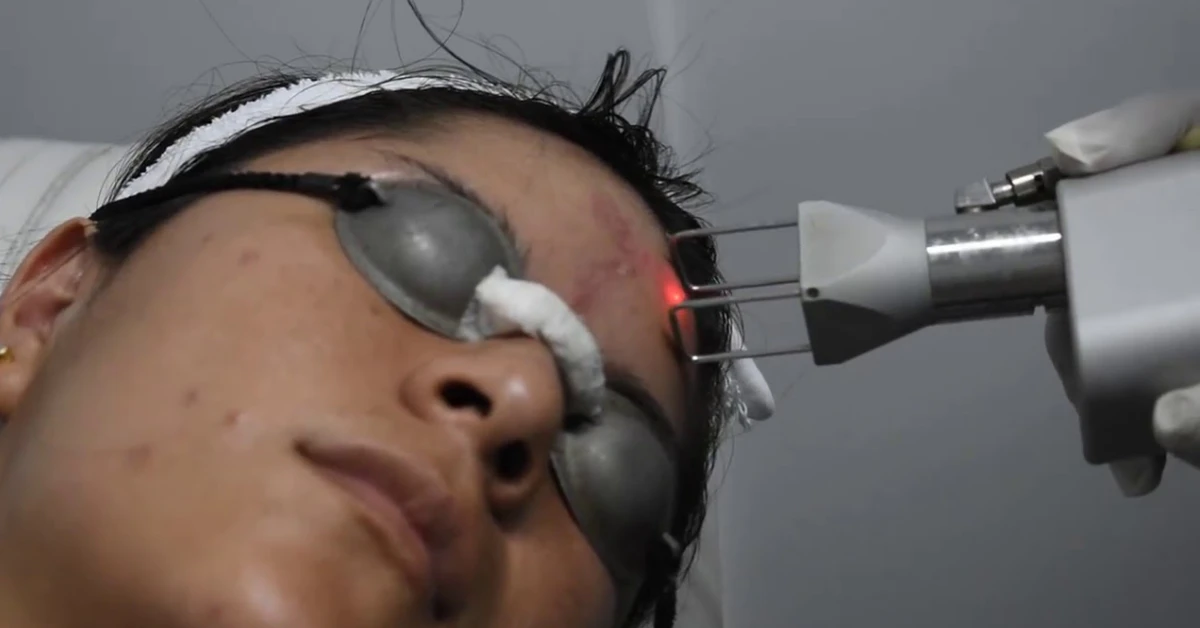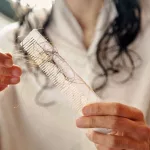Let’s be honest for a second—how many times have you caught yourself staring at a scar in the mirror, thinking, “Eh, it’s not that bad, I’ll just ignore it”? Maybe it’s a little mark from a childhood adventure, or a stubborn reminder of a breakout that just wouldn’t quit. At first, it’s easy to brush off. But over time, those little scars can start to feel like they’re shouting for attention, right?
And then, out of nowhere, you hear about laser CO2 for scars. Suddenly, there’s hope. But also, a million questions. Does it really work? Is it safe? Will it hurt? How much does it cost? And—let’s be real—will you end up looking like a tomato for weeks?
If you’re here, you’re probably looking for answers that feel honest, not just the shiny “before and after” photos. You want the real story, the good, the bad, and the “nobody ever tells you this” stuff. So, let’s dive in together. I’ll walk you through everything I’ve learned, sprinkle in some real experiences, and hopefully, by the end, you’ll feel like you’ve just had a heart-to-heart with a friend who’s got your back.
What Is CO2 Laser for Scars, and How Does It Actually Work?
Okay, so let’s break it down. The CO2 laser (that’s “carbon dioxide laser” if you want to sound fancy) is a type of skin resurfacing treatment. Imagine a super-precise beam of light, kind of like a microscopic magic eraser, gently vaporizing the top layers of your skin. Sounds intense, right? But here’s the cool part: as your skin heals, it starts to rebuild itself, producing fresh collagen and smoothing out those stubborn scars.
There are a bunch of different lasers out there, but CO2 is the heavy hitter for deep scars—think acne scars, surgical scars, or even those “I tripped and fell” battle wounds. It’s especially popular because it can tackle texture, color, and even the size of scars. If you’ve ever wondered why some people seem to have impossibly smooth skin after years of breakouts, there’s a good chance CO2 laser resurfacing played a role.
CO2 vs. Other Lasers: What’s the Difference?
Not all lasers are created equal. Some are gentler, like the Erbium laser, which is great for fine lines and lighter scars. But if you’re dealing with deeper, more stubborn marks, CO2 is often the go-to. It’s like comparing a feather duster to a power washer—both have their place, but sometimes you need a little more muscle.
Why Is CO2 Laser So Popular for Scars?
Honestly? Because it works. Dermatologists and plastic surgeons love it for its ability to deliver dramatic results, especially for scars that just won’t budge with creams or peels. Plus, it’s versatile—it can be used on the face, body, and even delicate areas like under the eyes (yep, “co2 laser resurfacing under eyes cost” is a thing people Google a lot!).
What Types of Scars Can CO2 Laser Treat?
Here’s where it gets interesting. CO2 laser isn’t just for one type of scar. It can help with:
- Acne scars (the pitted, rolling, or boxcar kind)
- Surgical scars
- Traumatic scars (from injuries or accidents)
- Stretch marks (sometimes, with varying results)
But—and this is important—it’s not for everyone. If you have very dark skin, certain medical conditions, or a history of keloids, your doctor might suggest a different approach. Always, always get a professional opinion before jumping in.
The Real Benefits of CO2 Laser for Scars (and What to Expect)
Let’s talk results. Because, let’s face it, that’s what you’re here for. The promise of laser CO2 for scars is smoother, more even skin. But what does that actually look like in real life?
Visible Changes: What Can You Really Expect?
Picture this: you’ve just finished your treatment, and your skin is red, maybe a little swollen. Not exactly Instagram-ready. But fast forward a few weeks, and things start to change. The texture of your skin feels softer, the scar looks less noticeable, and you might even catch yourself smiling at your reflection. It’s not magic, but it’s pretty close.
Of course, results vary. Some people see dramatic improvements after one session, while others need a few rounds. And yes, there are plenty of CO2 laser resurfacing before and after photos out there, but remember: everyone’s skin is different. What works wonders for one person might be more subtle for another.
Does It Help with Large Pores and Other Skin Issues?
Short answer: yes, it can. If you’re dealing with large pores or uneven skin texture, CO2 laser resurfacing can help smooth things out. It’s not just about scars—it’s about giving your skin a fresh start. Think of it as hitting the reset button.
Risks, Side Effects, and What Recovery Really Feels Like
Alright, time for some real talk. Every treatment has its risks, and CO2 laser is no exception. But knowing what to expect can make the whole process a lot less scary.
What Are the Risks?
Most people experience redness, swelling, and a sunburn-like feeling for a few days. Some might get scabbing or peeling as the skin heals. Rarely, there can be infection, changes in skin color, or even scarring (ironic, I know). That’s why it’s so important to choose a skilled, experienced provider—someone who knows their stuff and can guide you through the process safely.
How Long Does It Take to Heal?
This is the million-dollar question: how long does CO2 laser resurfacing take to heal? The answer depends on the depth of your treatment and your skin type, but most people need about 7-14 days for the initial healing. During this time, you’ll want to avoid sun exposure, keep your skin moisturized, and follow your doctor’s instructions to the letter.
But here’s the thing nobody tells you: the real magic happens over the next few months. As your skin continues to produce new collagen, you’ll notice gradual improvements. So, patience is key. It’s a marathon, not a sprint.
Post-Treatment Care: The Stuff You Wish You Knew Before
Let me give you a little insider tip: stock up on gentle cleansers, fragrance-free moisturizers, and sunscreen. Your skin will be extra sensitive, and you’ll want to baby it for a while. Avoid picking at any scabs (seriously, don’t do it!), and resist the urge to pile on makeup until your doctor gives the green light.
CO2 Laser for Scars: What’s the Real Cost?
Let’s talk numbers, because CO2 laser resurfacing cost is a big factor for most of us. The price can vary wildly depending on where you live, the size of the area being treated, and the experience of your provider.
| Treatment Area | Average Cost (USD) |
|---|---|
| Full Face | $2,000 – $4,000 |
| Under Eyes | $800 – $1,500 |
| Small Scar (localized) | $500 – $1,200 |
For example, if you’re searching for CO2 laser resurfacing New York, expect to pay on the higher end—big city, big prices. And if you’re curious about CO2 laser resurfacing under eyes cost, it’s usually less than a full-face treatment, but still a significant investment.
Why the range? It comes down to the provider’s expertise, the technology they use, and even the location of the clinic. My advice? Don’t bargain hunt when it comes to your face. Look for a board-certified dermatologist or plastic surgeon with lots of experience in laser treatments. Your skin will thank you.
Where to Get CO2 Laser for Scars (and How to Choose the Right Clinic)
Choosing where to get your treatment is just as important as the treatment itself. In places like New York, you’ll find clinics on every corner, but not all are created equal. Look for providers who specialize in laser resurfacing, have glowing reviews, and are happy to answer all your questions (no matter how many you have!).
Don’t be afraid to ask for before-and-after photos, details about the technology they use, and even a breakdown of the healing process. A good provider will make you feel comfortable, informed, and empowered to make the best decision for your skin.
Real Experiences: Stories from People Who’ve Been There
Let’s get personal for a second. I remember talking to a friend who struggled with acne scars for years. She tried every cream, peel, and home remedy you can imagine. Nothing worked—until she tried CO2 laser. The first week was rough (think redness, peeling, and a lot of Netflix), but by week three, she was glowing. Her confidence shot up, and she couldn’t stop smiling. Was it easy? Nope. Was it worth it? For her, absolutely.
Of course, not every story is a fairytale. Some people need multiple sessions, and others find the results more subtle. That’s why it’s so important to set realistic expectations and talk openly with your provider about what you hope to achieve.
And if you’re nervous, you’re not alone. It’s totally normal to feel a little anxious before a big treatment. But remember, you’re taking a step toward feeling better in your own skin—and that’s something to celebrate.
Expert Insights: What Dermatologists Want You to Know
Dermatologists and plastic surgeons agree: laser CO2 for scars is one of the most effective tools for improving skin texture and appearance. But they’ll also tell you it’s not a one-size-fits-all solution. The best results come from a personalized approach, tailored to your unique skin type, scar history, and goals.
According to a study on CO2 laser resurfacing, most patients see significant improvement in scar appearance, but the key is proper aftercare and realistic expectations. Trust your provider, follow their advice, and don’t be afraid to ask questions—no matter how small they seem.
Wrapping It Up: Is CO2 Laser for Scars Worth It?
So, here’s the bottom line: CO2 laser for scars can be a game-changer, but it’s not a miracle cure. It takes time, patience, and a little courage. But if you’re ready to invest in yourself and your skin, the results can be truly life-changing.
Remember, you’re not alone on this journey. Whether you’re just starting to explore your options or you’re ready to book your first session, I hope this guide has helped you feel more informed, empowered, and maybe even a little excited about what’s possible.
Have you tried CO2 laser for scars? Thinking about it? I’d love to hear your story. Drop a comment below, share your questions, or just say hi. We’re all in this together—and your experience might be exactly what someone else needs to hear.


















Leave a Reply
You must be logged in to post a comment.